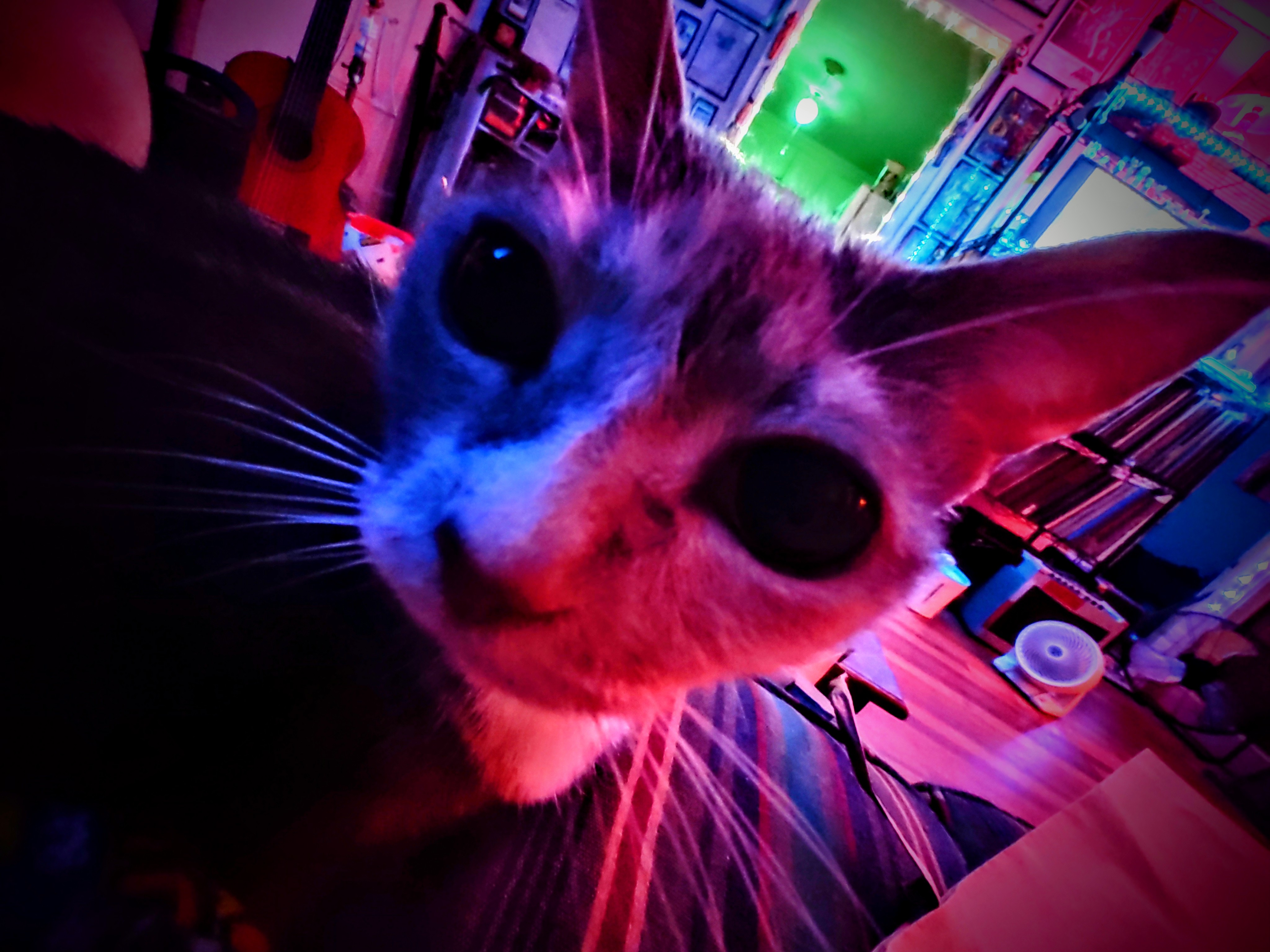As you get further away the dots blend together to form the picture.
Fun fact, images printed on paper also rely on the same phenomenon. If human eyes were better, you would need smaller patterns to produce the same illusion.
If you have some magazines or other print media around, take a nice magnifier of some sort to it. Or take a picture and zoom in
On large street posters you just need to walk closer to shatter the illusion. When you’re 100 m away, the picture looks perfect. Once you are close enough to touch the picture, you can clearly see that it’s composed of lots of small dots, and the colors are not even close to what you assumed before.
Your eye can only resolve points at beyond a certain arc angle, below which two close points of light appear as a single point. It’s to do with the spacing between the photoreceptors in your eye (they are individual units that act as a single eye, not a single sensor, i.e. your eye has a resolution of its own), the wavelength of the light coming in, and some neurological stuff. Physics and biology.
Edit: wanted to add that all color TV’s are made of a matrix of three color elements, usually with 2x the number of green versus red and blue. If it looks like it’s one color, then there’s usually a diffuser in the way, or you need to get in closer.
I’m sure someone is going to post a Technology Connections video that explains it all.
I don’t recall seeing a Technology Connections video on it, but there is a Slow Mo Guys video that touches on the topic.
So in the back of your eyeballs are special photo receptive bits called cones that you use to see color. There are three different kinds and they each detect red, green, or blue light. Using those three sets of wavelengths and the overlap between them your brain combines which cones are receiving light to make up all the other colors.
You might notice that pixels use those same colors. Once you back up enough it looks like each set of three pixels is actually a single point of light, so your brain combines the wavelengths into a single color.
You have a finite amount of cones in your eye that see colors. When things are far enough away they blend together.
Imagine a chain link fence. If someone is standing against it then you can see them through a bunch of the holes. If they walk further and further away you’ll see them through less and less holes and eventually it may look like they’re visible through only one.
Now, imagine they’re holding a poster board with a red, blue, and green rectangle. When they’re against the fence, this is like being close to the TV. Imagine the holes in the fence as come cells in your eye. Each cone in your eye is stimulated by a single sublixel. As it moves back, the cones are stimulated by multiple sublixels. Once it’s far enough back so that a cone is stimulated by all three then the illusion is complete.
Now, it could be that this is one of those weird things that happens with how your brain perceives signals from your eyes and the illusion happens even before that, but I can’t remember.




